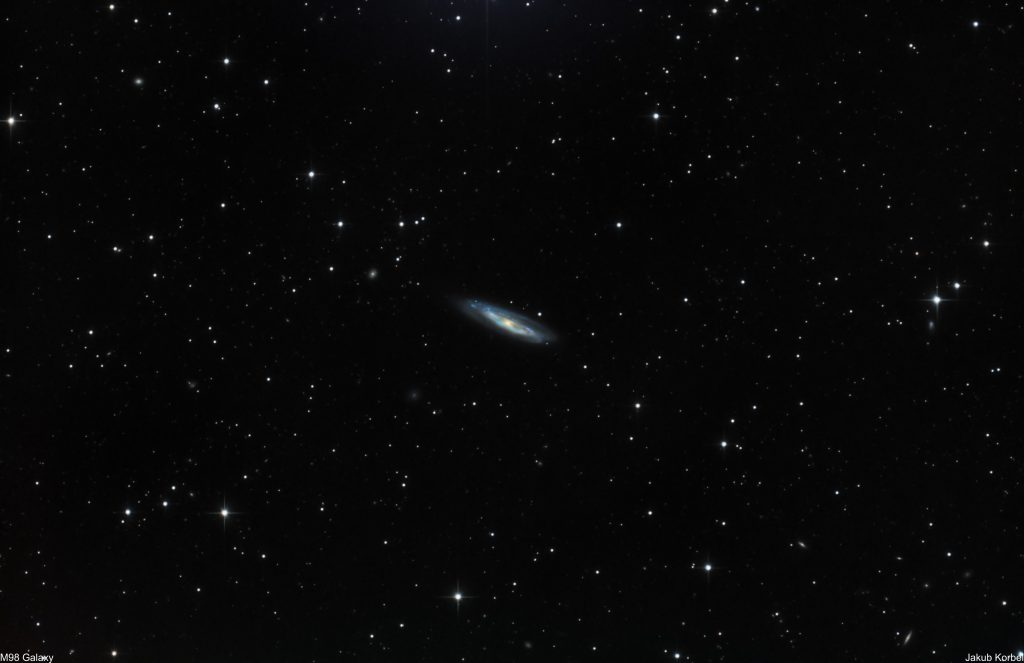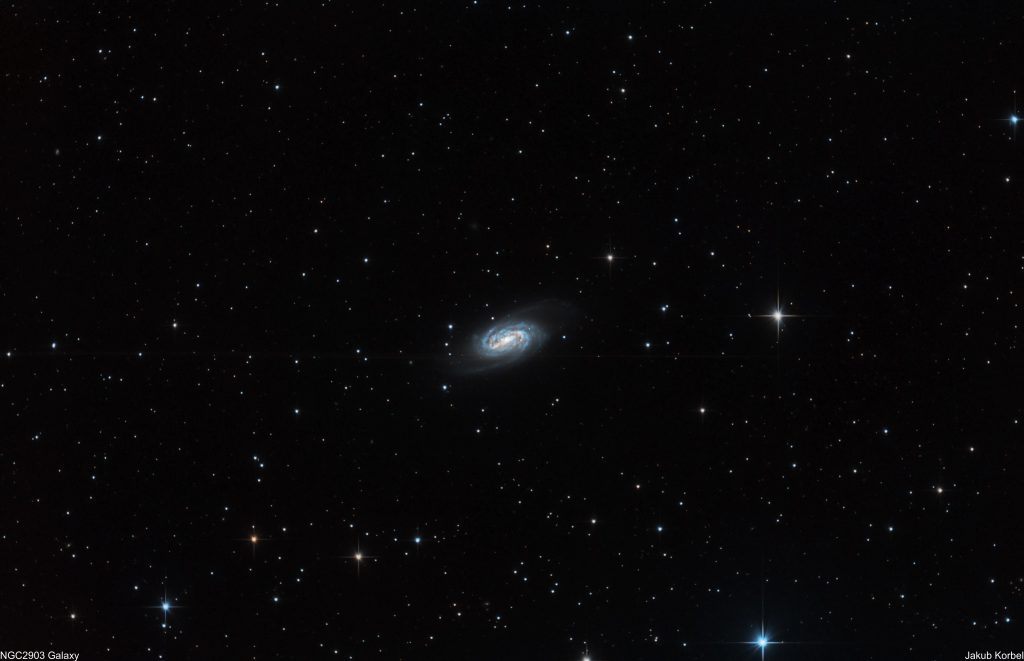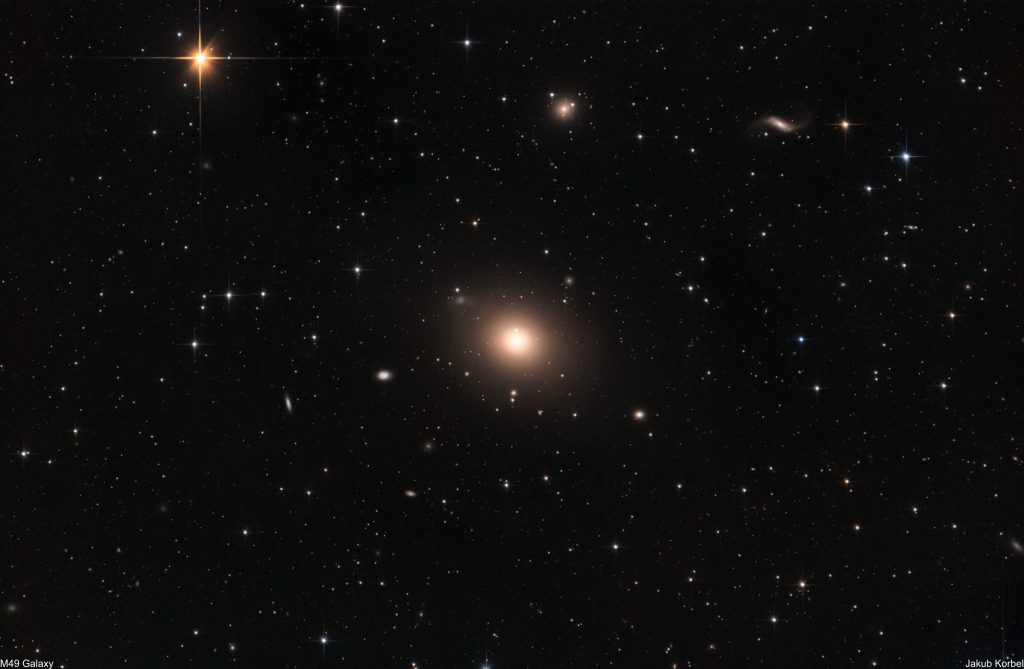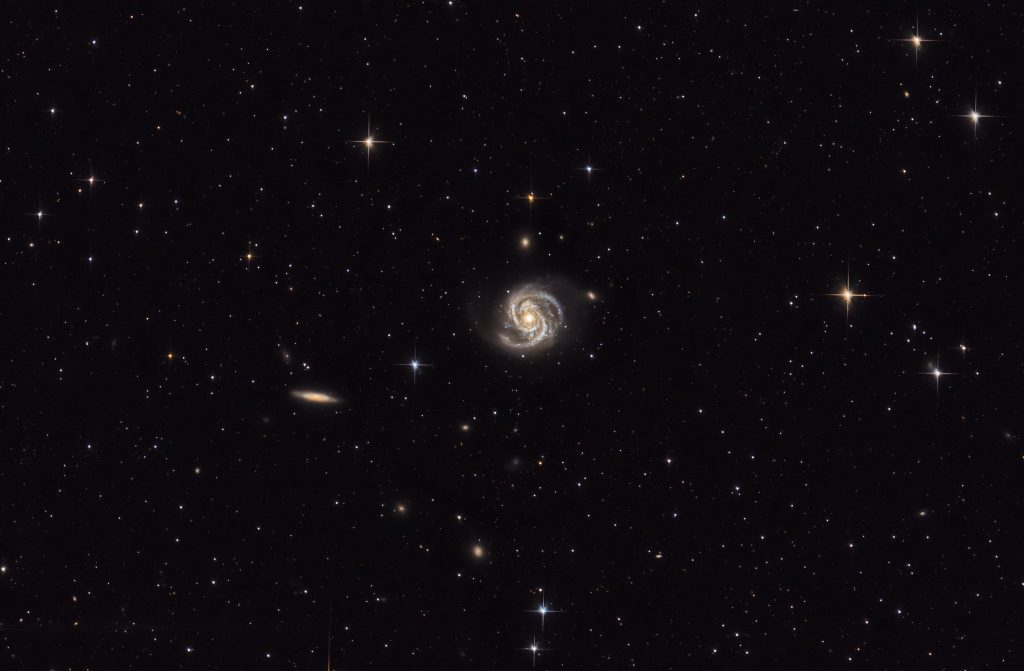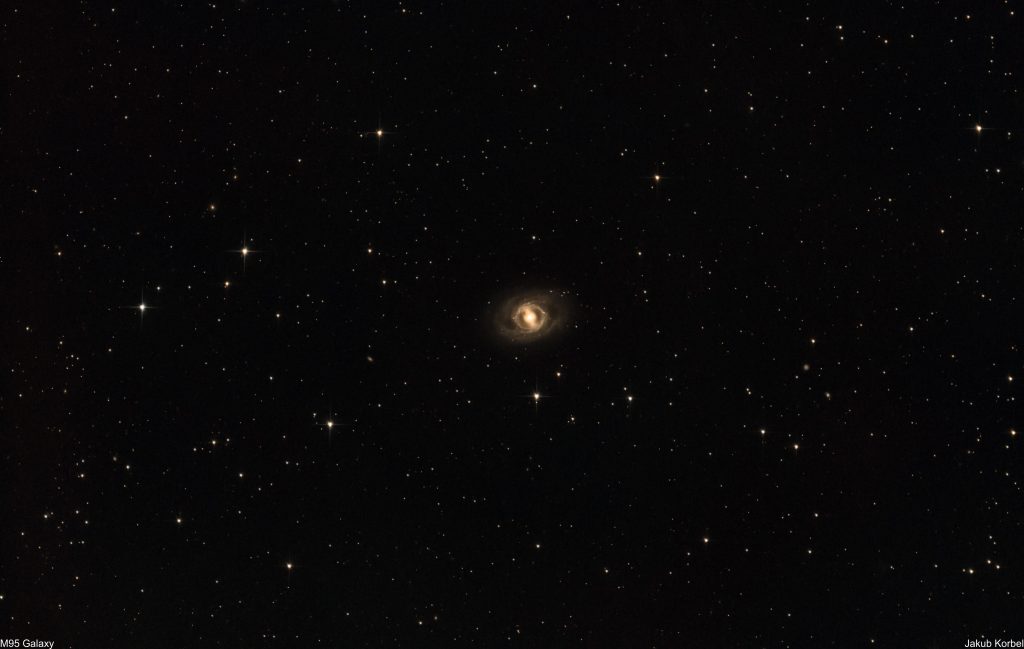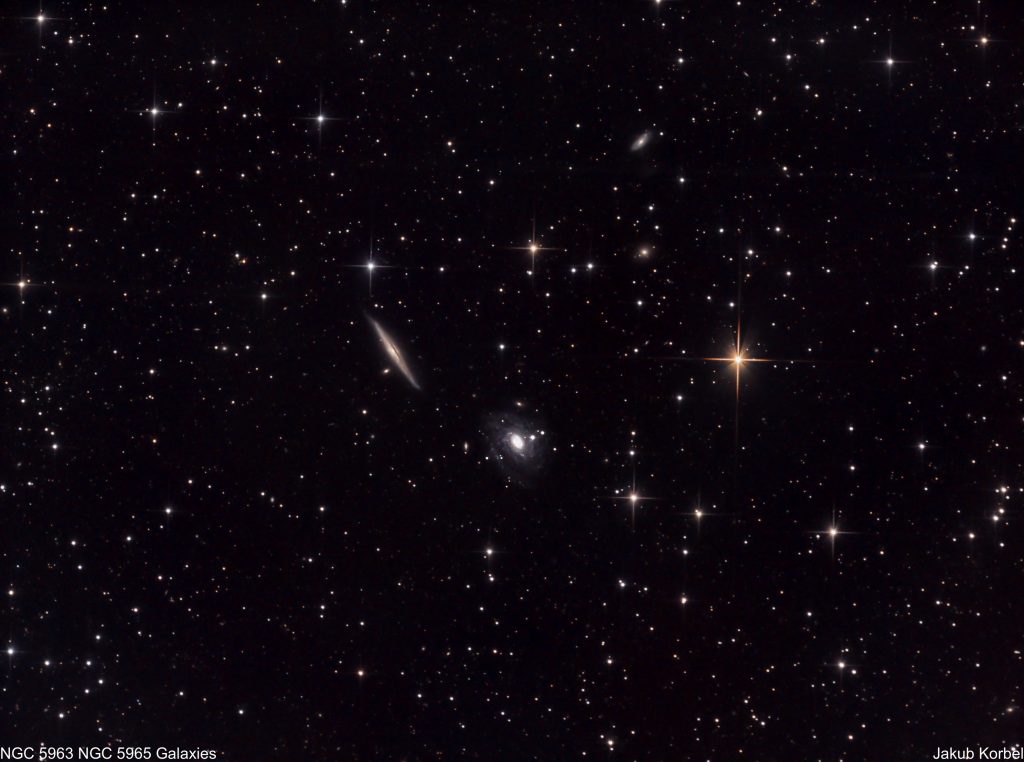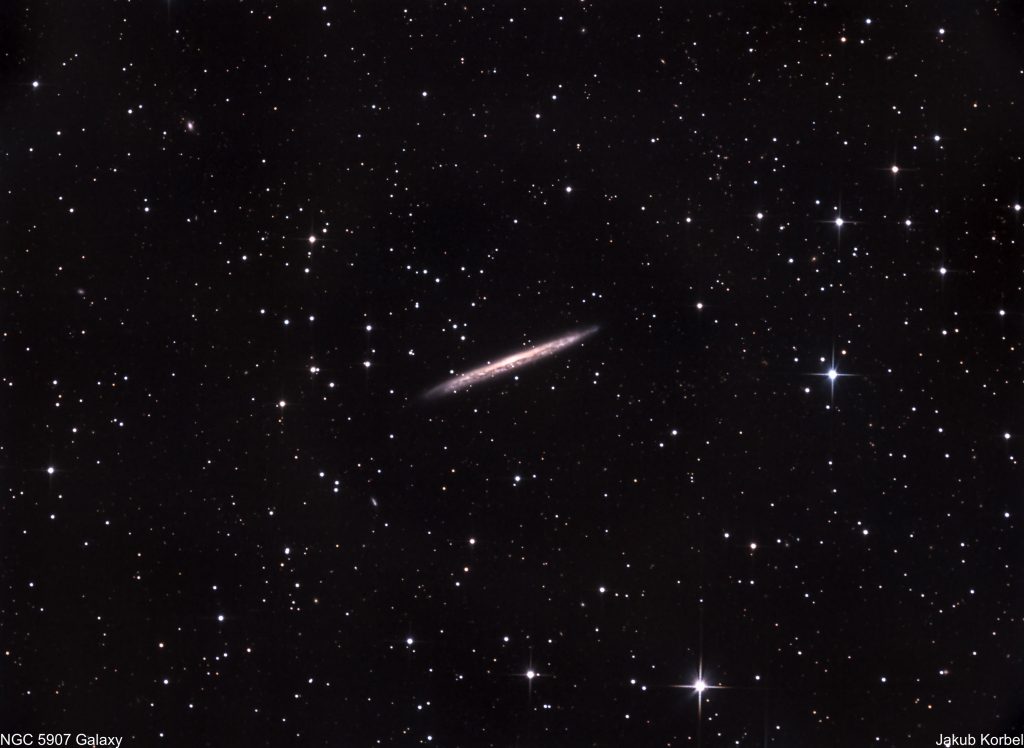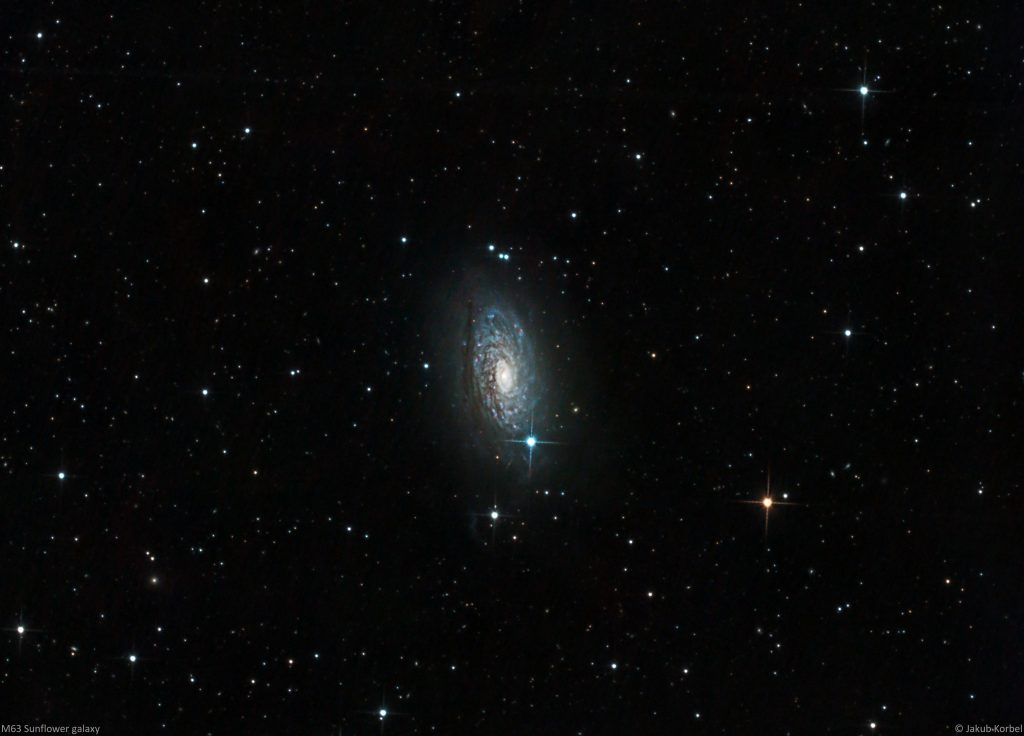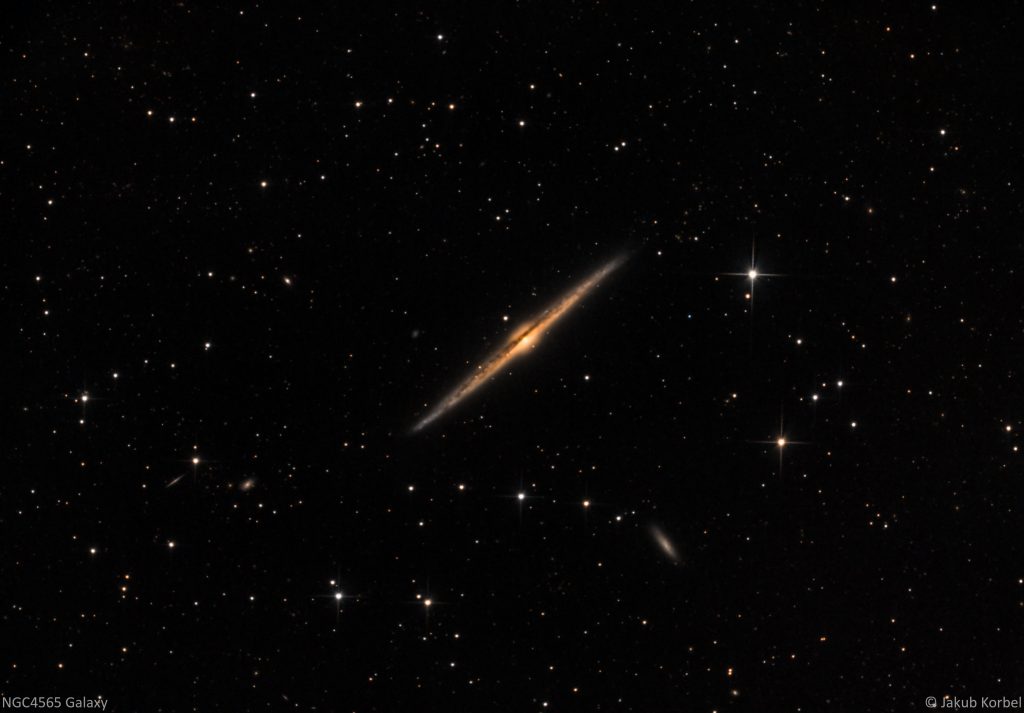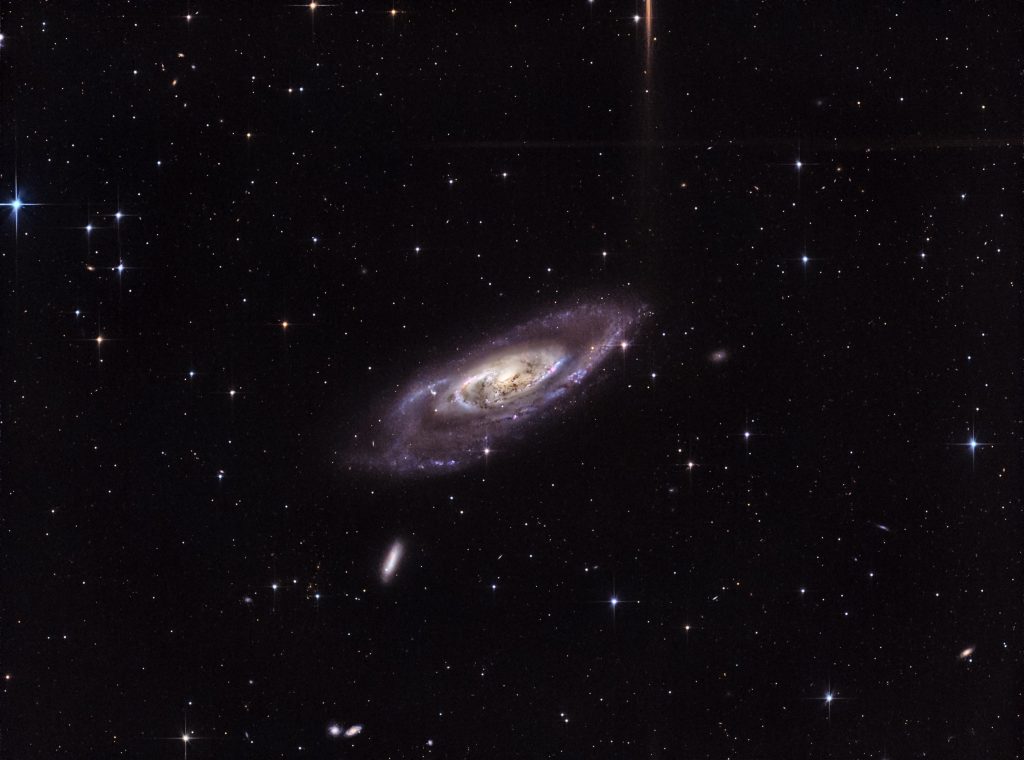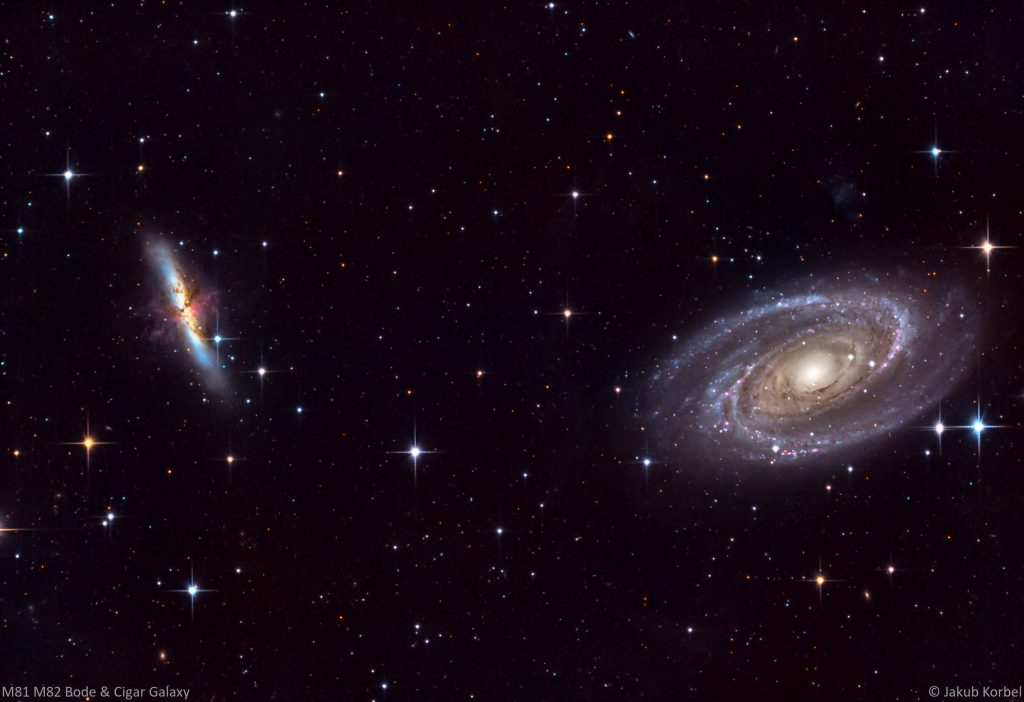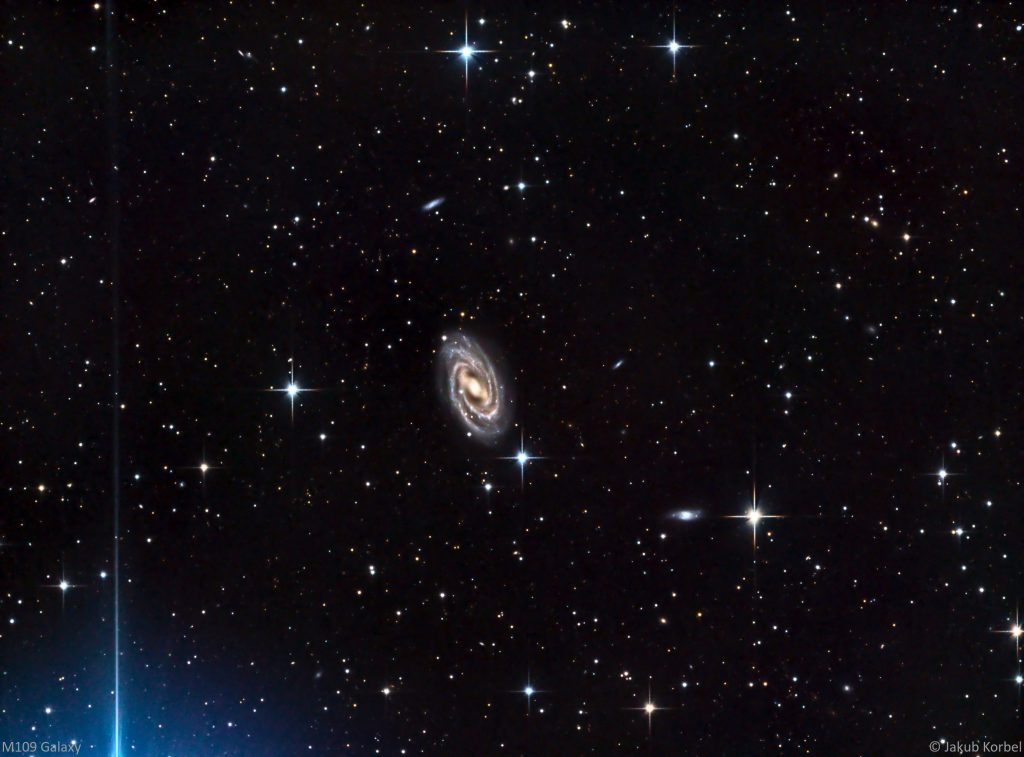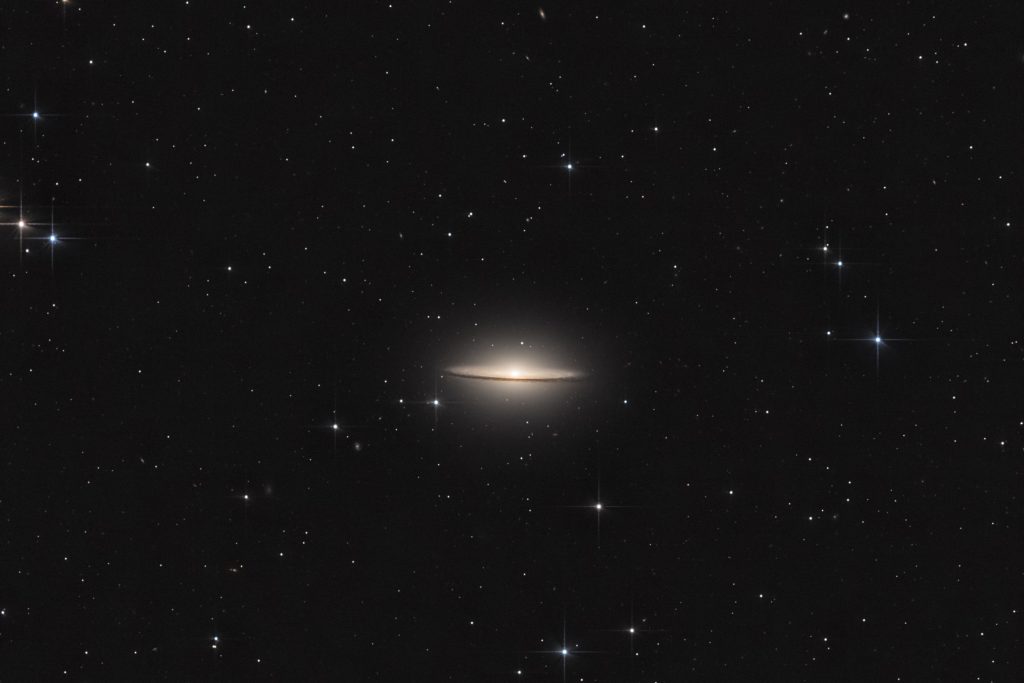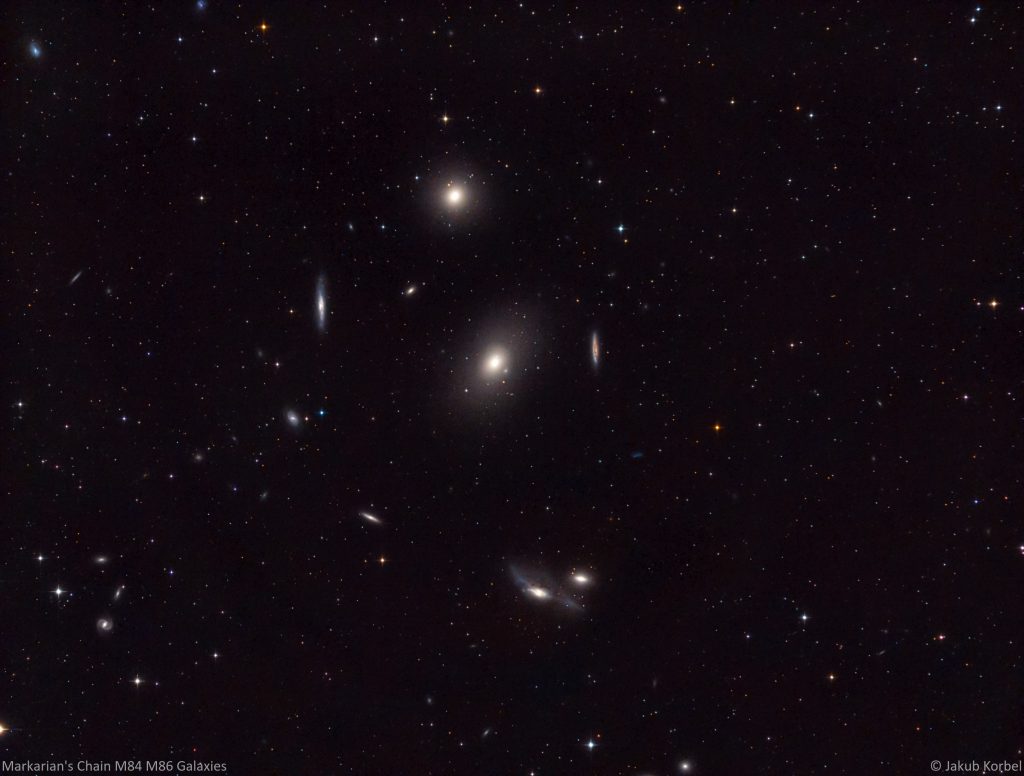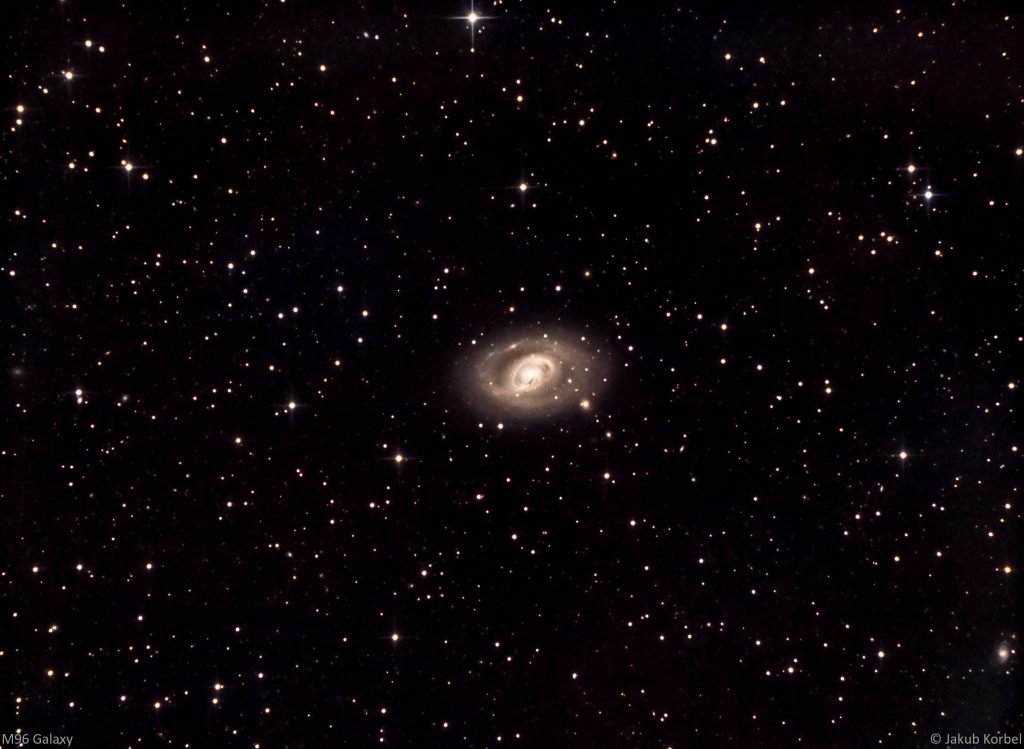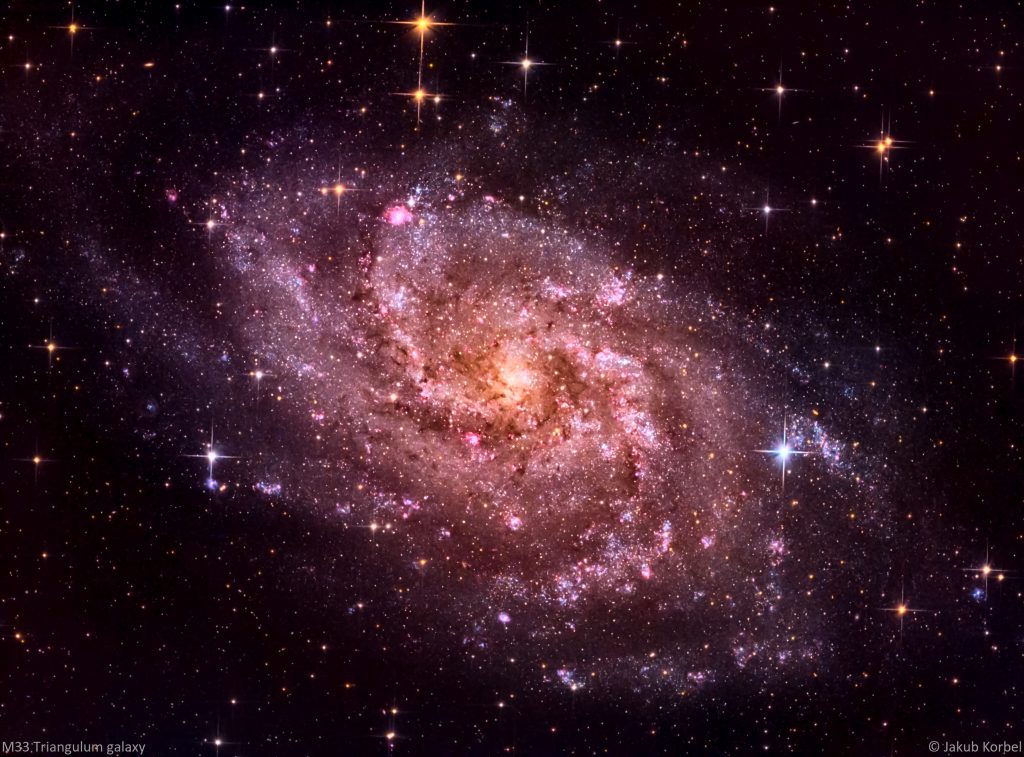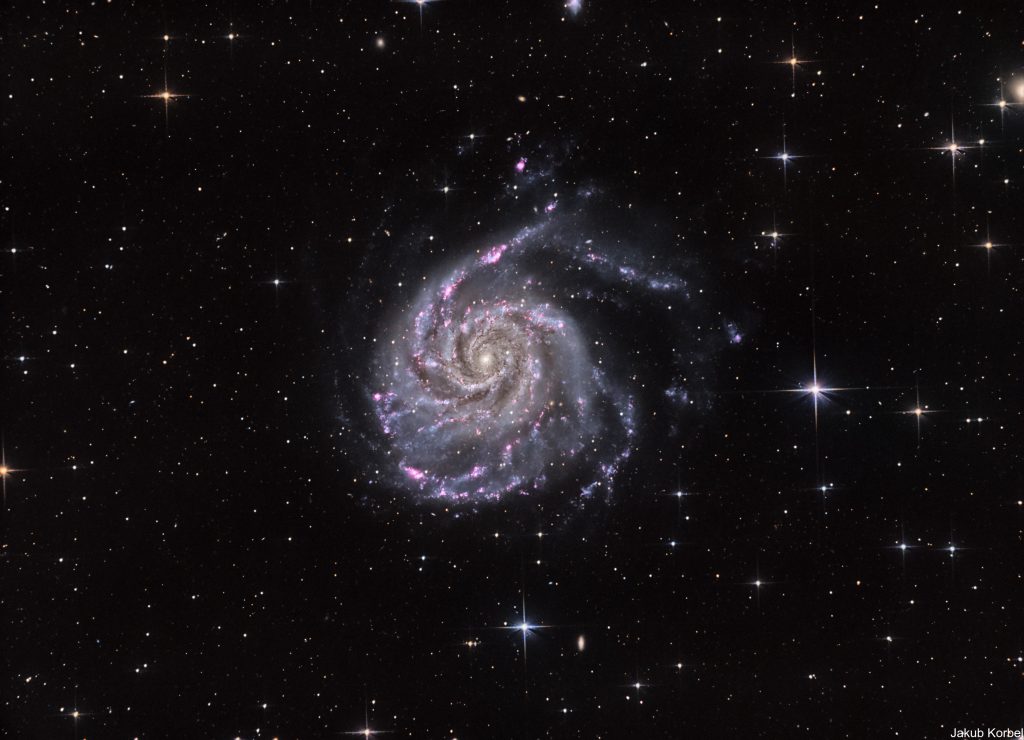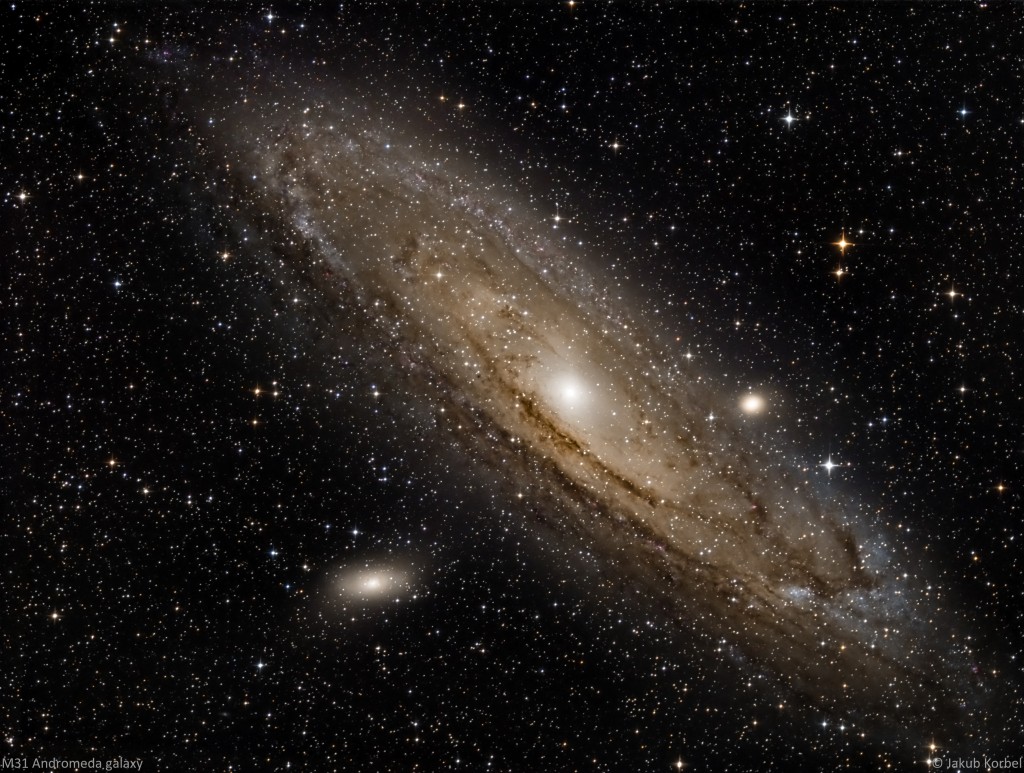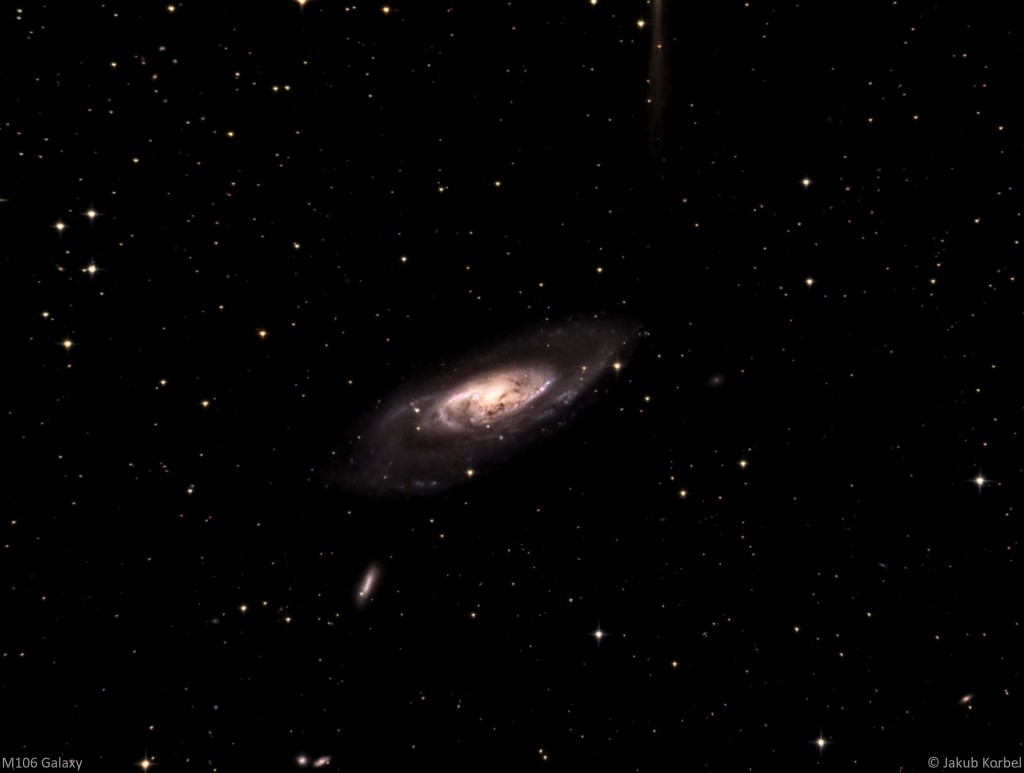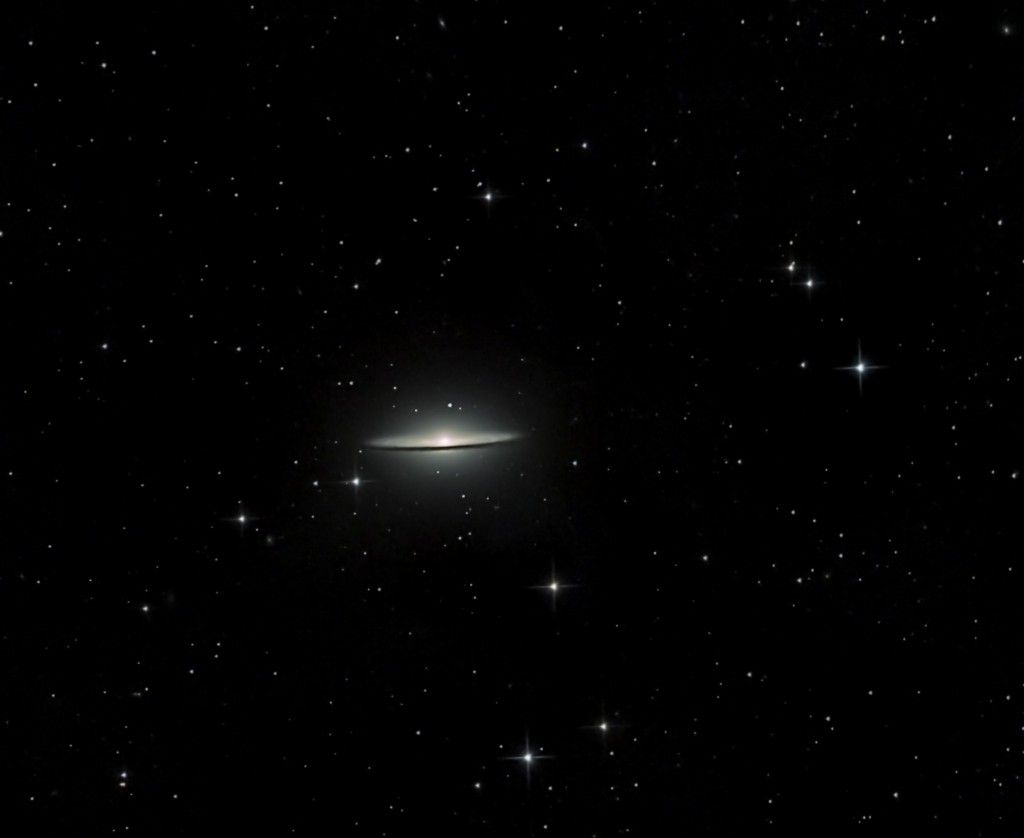Messier 98 is a spiral galaxy located in constellation Coma Berenices. This galaxy is easy to find, because it is located only 6° to the east from the bright star Danebola. M98 is approximately 44 million light years away and it has a blue shift. This means that it is approaching us at about 140 km/s. This means we have still some time till the collision occurs.
Technical details:
| Telescope: | Newton 254/1000 mm |
| Aperture: | 254 mm |
| Focal length: | 1000 mm |
| Mount | Gemini G53f |
| Autoguiding | ZWO 174MM, TS 60/240 mm |
| Camera: | ZWO ASI071MC Pro |
| Corrector: | GPU |
| Filters: | UV IR cut |
| Exposure: | 54xRGB 300s |
| Date: | 2018-04-17 |

